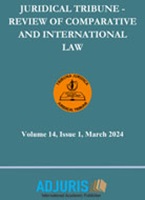Global Patterns of Constitutional Judicial Review Systems: Two Major Models of Constitutional Judicial Review in the World
Global Patterns of Constitutional Judicial Review Systems: Two Major Models of Constitutional Judicial Review in the World
Author(s): Blerton SinaniSubject(s): History of Law, Constitutional Law, Politics and law, EU-Legislation, Sociology of Law, Comparative Law
Published by: Societatea de Stiinte Juridice si Administrative
Keywords: normative supremacy of constitution; rule of law; constituent power; democracy; human rights; American model of decentralized judicial constitutional review; European model of centralized judicial con
Summary/Abstract: Judicial constitutional review is an essential component of upholding constitutionalism, even though it is a relatively new concept outside the United States. The US Supreme Court set a precedent in 1803 in the Marbury v. Madison case by declaring legislative acts unconstitutional, which is widely regarded as the beginning of the principle or doctrine of judicial constitutional review. Since then, judicial constitutional review has become a widely accepted feature of most democratic legal systems. Comparative constitutional law recognizes two well-known models of judicial constitutional review: the American model of dispersed or decentralized review by ordinary courts and the constitutional Kelsen/European model of centralized review by a specialized constitutional court. Additionally, there are mixed or hybrid systems that combine elements of both models.
Journal: Juridical Tribune - Review of Comparative and International Law
- Issue Year: 14/2024
- Issue No: 1
- Page Range: 155-172
- Page Count: 18
- Language: English

